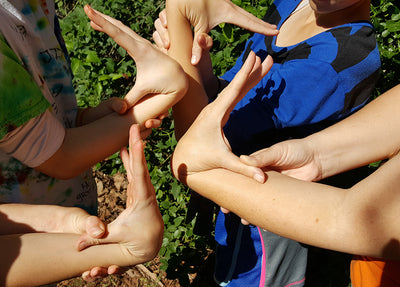
The Rare Stretch: Ehlers-Danlos Syndrome Information and Remedies
For millions, the freedom and relaxation of strolling throughout a park is an effortless luxury. Yet, for a select group of individuals, the crisp breeze rolling across their skin is an unsavory reminder of their delicate nature. The world according to those with Ehlers-Danlos syndrome (EDS) is one filled with viable threats.
Have you ever been afraid to play frisbee or see an uneven sidewalk as a potential danger to your joints? If you’ve been diagnosed with this rare genetic condition, even the simplest of tasks can transform into a real danger. In essence, EDS is the epitome of a mole hill turning into a jagged, dangerous mountain.
So what is EDS? More importantly, are there treatments capable of restoring functionality to those sinking under the weight of this permeating disorder?
Connecting Facts - What Is Ehlers-Danlos Syndrome?
You’re likely familiar with collagen. This essential structural component found throughout our body is a buzz word in the cosmetic industry. However, its function spans far beyond keeping your face young and fresh.
Considered a building block for skin, connective tissues and cartilage, collagen wears many hats in your body. When these foundational blocks are disrupted due to disease, aging or genetic disorders, its effects are widespread. This is the case for EDS patients.
Categorized as a connective tissue disorder, EDS essentially disrupts the genetic code responsible for the formation, actions and characteristics of connective tissues. As with many genetic disorders, EDS is an umbrella term covering a group of 13 disorders. Each subtype is characterized by specific symptoms, which range in severity and location.
The Onset of Fragility - Ehlers-Danlos Symptoms
Although there are several overarching symptoms shared by many EDS patients, which are discussed below, each subtype manifests itself differently.
For example, vascular type (vEDS) primarily affects physical appearance, such as having a clubfoot, while periodontal type (pEDS) weakens dental strength, which can result in tooth loss.
Regardless of subtype, this disorder generally manifests with:
- Joint Hypermobility - Joints aren’t tight and move beyond, or hyperextend, normal range of motion, which can cause dislocations or mild to severe joint pain.
- Stretchy Skin - The lack of proper collagen production often leaves skin extremely stretchy and velvety to the touch.
- Fragile Skin - EDS patients typically experience problems with wound healing. The delicate nature of EDS skin makes them more susceptible to cuts and scars. In serious wounds, traditional stitching methods may not work as the skin isn’t strong enough to hold the stitches in place.
- Delicate Blood Vessels - Blood vessel walls can be extremely fragile. This manifests as being easily bruised, or in serious cases, complicated bleeding episodes.
- Other Symptoms - Muscle fatigue, premature onset of osteoarthritis, transparent skin, sunken cheeks, heart valve issues and benign tumors at joint sites, such as on your knees and elbows.
The Root of EDS - Causes and Risk Factors
To understand the causes of EDS, we must first dive into the complex universe of genetics. All humans traits are the result of genes passed on by your mother and father. In some cases, such as EDS, this genetic combination goes awry.
While EDS is typically inherited from a parent, this isn’t always the case. Spontaneous genetic mutations can happen, which results in EDS even though neither parents have this disorder. However, if a parent carries this mutation, there’s a 50% chance of passing it on to offspring.
Think about genetic mutations as giving your body an improper list of instructions. Exact genetic modifications determine subtype and severity. In general, all Ehlers-Danlos types alter two primary genetic categories:
- Collagen Synthesis - Your body creates a variety of collagen types. Gene mutations alter collagen molecules. Based on your subtype, this improper molecule assembly impacts connective tissue structure and strength.
- Protein Interactions - Genes, such as TNXB, PLOD1 and ADAMTS2, instruct proteins designed to interact or process collagen.
Beyond Strengthening Your Skin - Ehlers-Danlos Treatment Options
Treatment plans and long-term prognosis varies based on EDS subtype and individual factors. Although there isn’t a cure for EDS, treatment plans and preventative measures can dilute symptom severity and lower risk of secondary injuries.
Many find combining traditional treatments with natural herbal remedies mediate symptoms and risk factors. Recommended options include:
- Physical Therapy - PT exercises can be a powerful way to restore muscle strength and joint stability. Aquatic physical therapy is beneficial without the inherent risk of hyperextending joints or damaging muscles. Braces may be recommended to stabilize joints and to prevent painful dislocations.
- Surgical Options - In severe cases, surgery is recommended to restore damaged joints or repair vascular issues. Of course, EDS subtype determines if this is a safe treatment option.
- Natural Treatments - Treating an incurable genetic disorder often involves mediating symptoms. Holistic practitioners recommend supplements to support collagen production. Aloe vera gel, hyaluronic acid and jojoba oils are effective options.
- Nutritional Therapies - The saying “You are what you eat” rings true when dealing with EDS. Recent research has even found a connection between symptom severity and undiagnosed food allergies. Vitamin C and magnesium supplements are recommended. In general, switching to a whole foods, unprocessed diet offers the nutritional support your body requires to deal with this complex genetic disorder.
Sources:
The Ehlers-Danlos Society - What Are The Ehlers-Danlos Syndromes?
Mayo Clinic - Ehlers-Danlos Syndrome
National Organization for Rare Disorders - Ehlers Danlos Syndromes
U.S. National Library of Medicine - Ehlers-Danlos Syndrome
EDS NYC - Elsevier Medical Hypotheses - A Novel Therapeutic Strategy for Ehlers-Danlos Syndrome Based on Nutritional Supplements
The American Society of Human Genetics - High Prevalence of Food Allergies in Patients With Ehlers-Danlos Syndromes


 {{/image.src}}
{{/image.src}}





